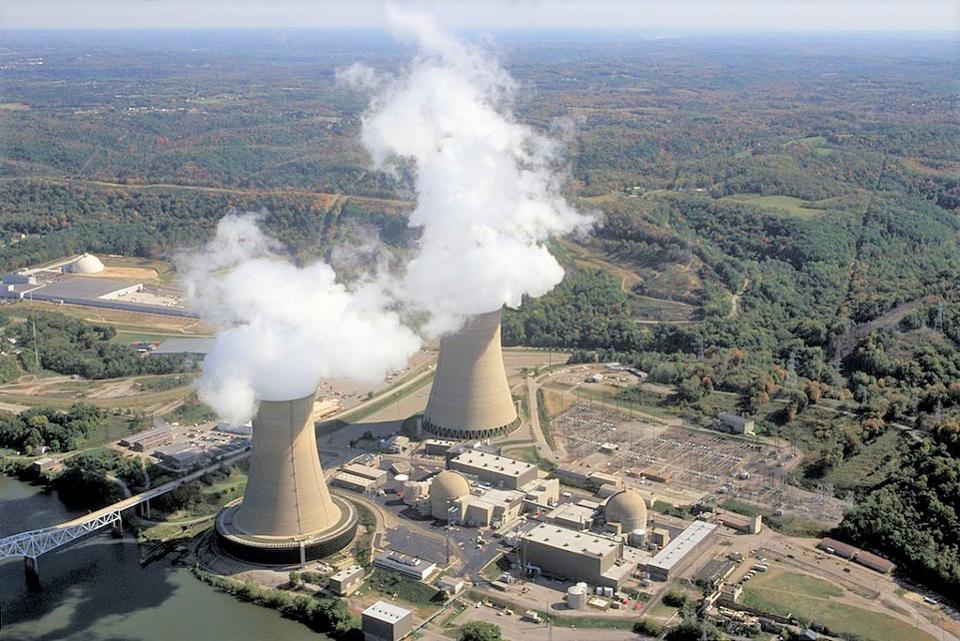The sources of energy that power the grid to charge electric car batteries matter just as much as vehicle emissions. Nuclear power is a clean and efficient power source, but its availability is at risk due to cheaper sources of energy, such as natural gas and renewables.
The Department of Energy submitted a proposal to the Federal Energy Regulatory Commission (FERC) that included a request to provide cost recovery for plants with onsite fuel supplies, such as nuclear and coal. FERC recently rejected the proposal and short-term support for struggling power plants was turned down.
This decision is especially concerning since the top three fuel sources used by the U.S. electric grid are coal, natural gas and nuclear — renewable sources such as wind and solar make up only about 15 percent of electricity production, but they likely will contribute more as better storage solutions become available. Thus, two-thirds of the most used fuel sources for electricity are at risk of becoming less available due to cheaper options.
In the meantime, electricity demand is projected to increase more than 25% by 2040, according to the U.S. Energy Information Administration. One contributing factor is the adoption of more electric vehicles (EVs) which will need additional power to charge their batteries.
Due to industry developments, such as better batteries and regulations that limit emissions, EVs are becoming more common. As drivers begin to realize the low cost of maintenance and fuel, EVs will increasingly be considered a bargain. According to one forecast, there will be almost 12 million EVs by 2025.
The U.S. currently has 61 commercially operating nuclear power sites with nearly 100 reactors that collectively supply almost 20% of the country’s electricity.
A byproduct of nuclear power is waste, which must be carefully managed because it is temporarily radioactive. Isolation or dilution of radioactive waste ensures that atoms with excess nuclear energy are harmlessly returned to the biosphere. Nuclear waste is regulated and is included in electricity costs paid by consumers.
BWX Technologies (BWXT) is an example of a leading provider of radioactive and hazardous material management services with over 30 years of experience. In fact, BWXT has remediated more than 100,000 acres of high-hazard operation, including the Mound Site in Ohio, the Rocky Flats in Colorado, the Savannah River Site in South Carolina and many others.
By reprocessing nuclear waste, a plant can recover up to 95% otherwise wasted uranium and plutonium. Reprocessing also reduces the long-term radioactivity and the volume of waste up to 90%. France, which reprocesses only 28% of its nuclear fuel waste, has the cleanest air and cheapest electricity in Europe.
Unfortunately, when most people hear the word “nuclear,” they tend to associate it with danger, such as the bombs dropped on Japan in 1945, the meltdown of the Chernobyl reactor in 1986 and the damaged Fukushima reactors in 2011. Many are surprised to learn that nuclear energy is used not only for electricity and weapons but also for medicine, manufacturing and minerals exploration.
In Pennsylvania, state legislators have formed a caucus to study how other states like New York and Illinois compensate nuclear operators for providing carbon-free power. In addition, New York implemented market operation changes after realizing the state could not achieve its ambitious climate goals without nuclear power, preventing three nuclear power plants from closing.
Some experts recommend that the U.S. Congress enact a nationwide price on carbon that puts all zero-carbon energy such as nuclear on equal footing. The Nuclear Regulatory Commission could also speed up the permitting process to ensure the safety of new and existing reactors without adding to operational costs.
As EVs become more popular, more power will be needed to charge their batteries. America needs diverse power generation sources, including nuclear, to meet this surge of electricity demand and to balance the risks and benefits of multiple energy sources. In any rational planning system, nuclear power deserves a future.
BWX Technologies contributes to my think tank.







